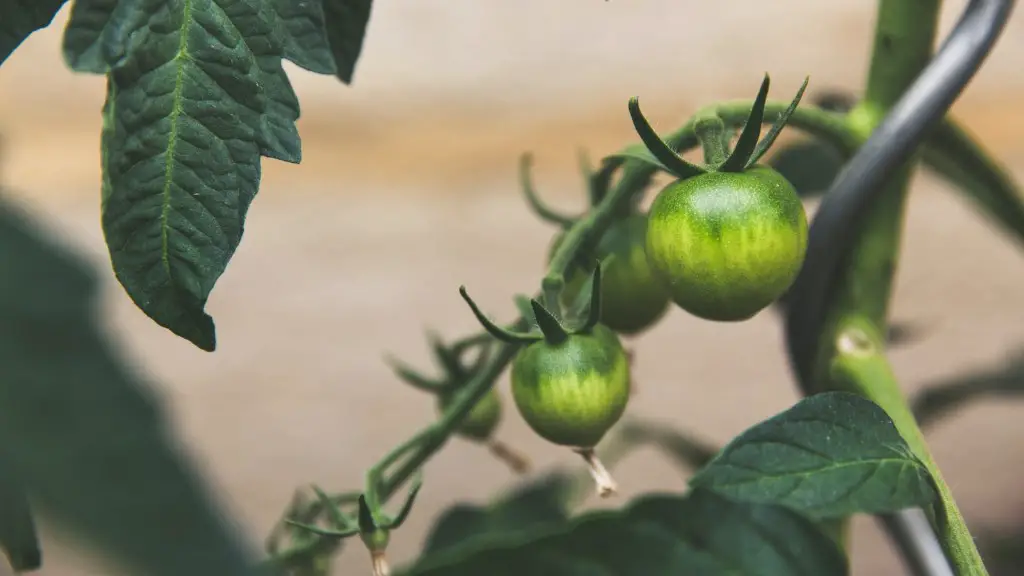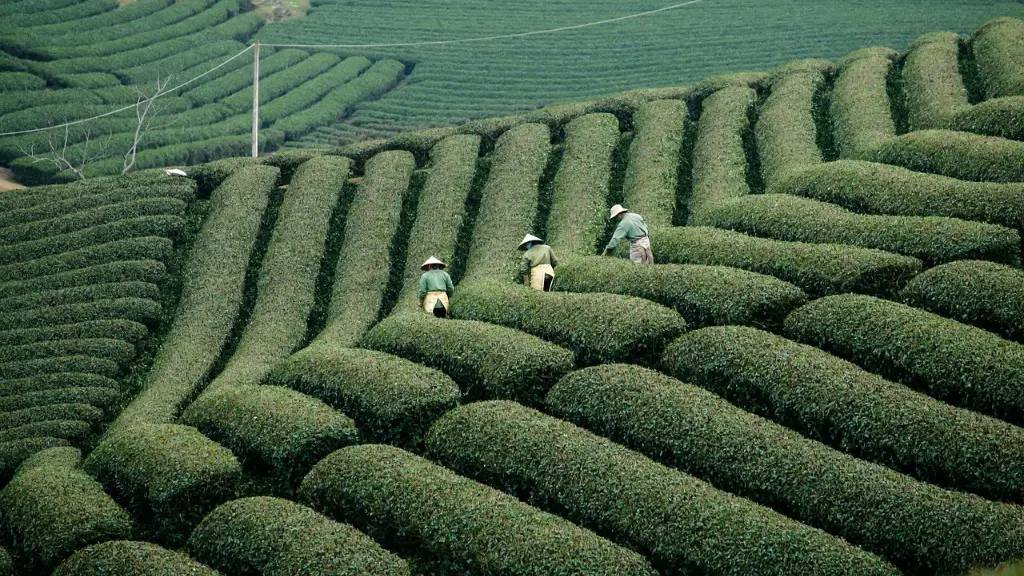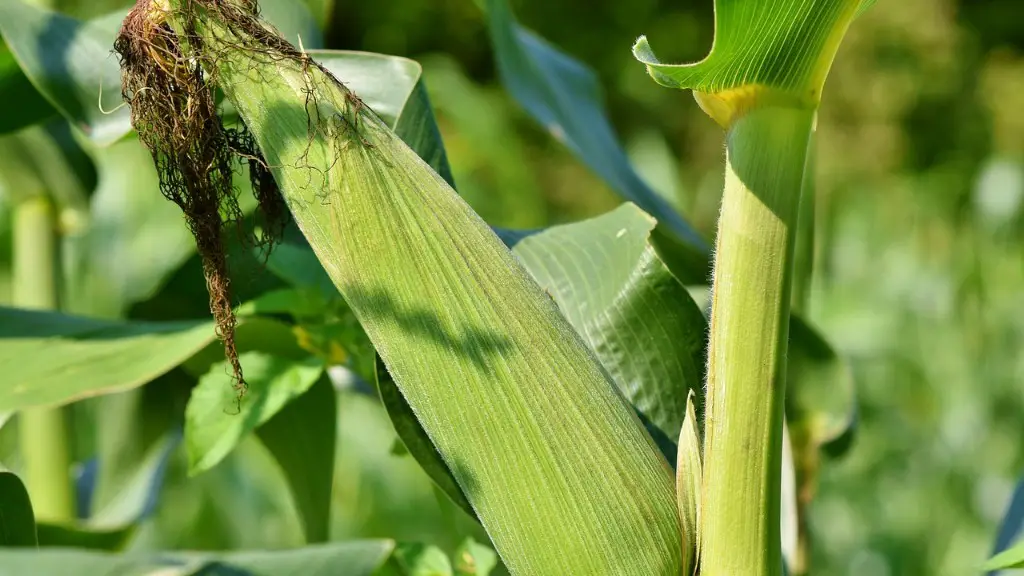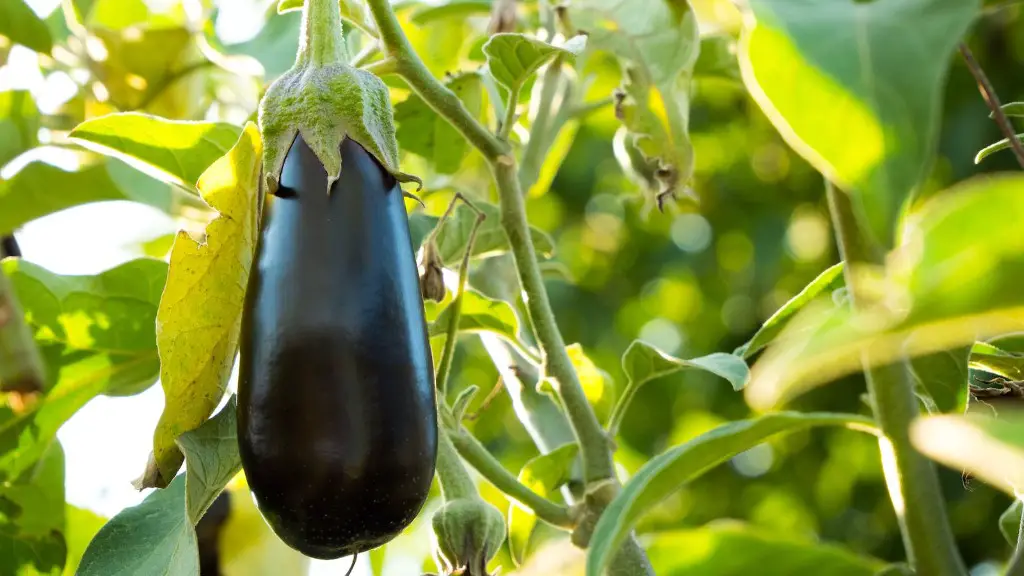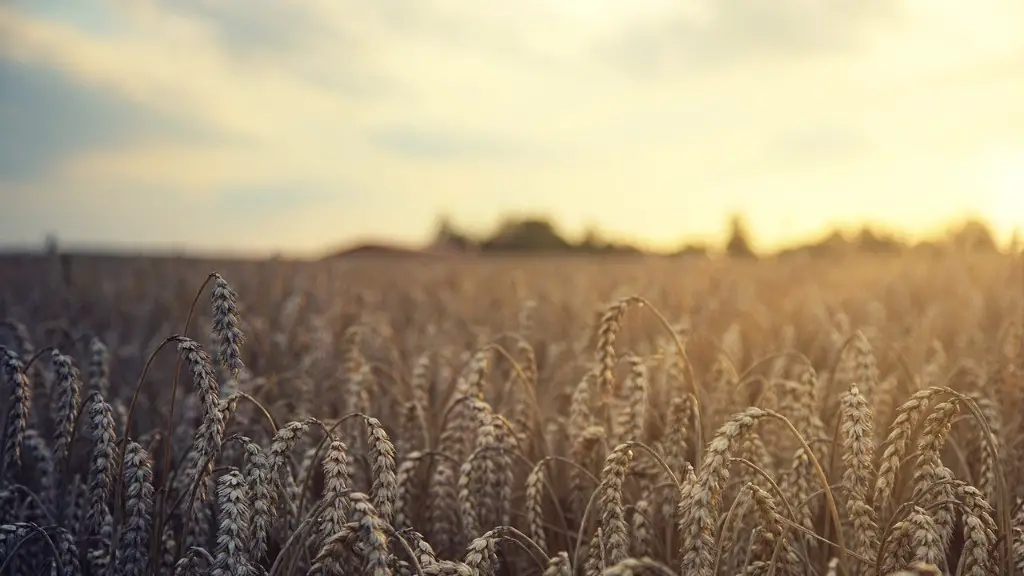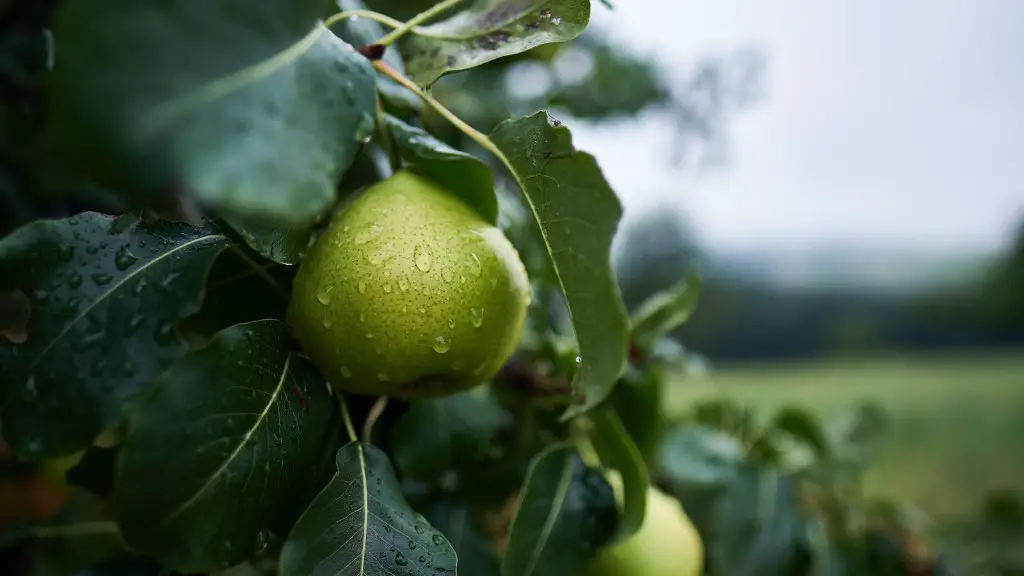Technological changes in agriculture are those that result in new ways of farming. This can include new machines, new methods of planting and harvesting, and new ways of raising livestock. Agricultural technology can make farming more efficient and allow farmers to grow more food with fewer resources.
The last century has seen a dramatic increase in agricultural productivity as a result of technological advances. The introduction of new and improved crop varieties, synthetic fertilizers, pesticides and herbicides, and mechanization has increased yields and allowed farmers to produce more food with fewer inputs.
Today, farmers are using more sophisticated technologies to increase yields even further. These include precision agriculture, where farmers use GPS and other technology to map their fields and target inputs more precisely; gene editing, which is being used to develop crops that are more resistant to pests and diseases; and robotics, which is providing new opportunities for automation in agriculture.
What were the major changes to agriculture during the technology revolution?
The Agricultural Revolution was a period of significant agricultural development that took place during the 18th century. It was marked by new agricultural practices, such as crop rotation, selective breeding, and more productive use of arable land. These new practices allowed for increased agricultural production, which led to an increase in population and an improved standard of living for many people.
Robots and drones are increasingly being used in traditional farm operations such as picking fruits, killing weeds, or spraying water or fertilizer on crops. This is due to the fact that imagery from drones and satellites, coupled with Global Positioning System (GPS) technology, provides a high-resolution and location-specific view of the field. This allows farmers to more accurately target their operations, resulting in increased efficiency and decreased costs.
What are the three major technologies that improved agriculture
Agricultural technology has advanced greatly over time, leading to higher yields and improved quality of crops. The tractor was introduced, followed by new tillage and harvesting equipment, irrigation and air seeding technology, all of which have contributed to increased productivity in agriculture.
The agriculture industry has seen a lot of changes over the past 50 years. With advances in machinery, farmers have been able to cultivate more land and increase their yields. Seed, irrigation, and fertilizers have also improved, making farming more efficient and productive.
What are 5 examples of technologies used in agriculture?
GIS software and GPS agriculture:
GPS-based systems are becoming increasingly popular in agriculture, as they offer farmers a more efficient way to track and manage their crops and livestock. GPS-based agricultural systems can help farmers to optimize their irrigation and fertilization schedules, as well as track the movements of their animals.
Satellite imagery:
Satellite imagery is another important tool that is being used more and more in agriculture. Satellite images can be used to monitor crop growth, assess soil moisture levels, and track changes in land use.
Drone and other aerial imagery:
Drones are becoming increasingly popular for agricultural applications, as they offer a cost-effective way to collect high-resolution imagery. Drones can be used to monitor crop growth, assess soil conditions, and detect crop stress.
Farming software and online data:
There is a growing trend towards the use of software and online data in agriculture. Farmers are using software to track and manage their crops and livestock, as well as to monitor weather and market conditions. Online data is also being used more and more to help farmers to make decisions about what to plant and when to sell their crops.
Merging datasets:
One of the
There are many new and emerging technologies in the agriculture industry that are helping to improve yields and efficiency. Some of these technologies include weather tracking, satellite imaging, pervasive automation, minichromosomal technology, and RFID technology.
Weather tracking is becoming more and more accurate, allowing farmers to better predict weather patterns and make better decisions about when to plant, water, and harvest their crops. Satellite imaging is also becoming more sophisticated and can be used to detect crop stress, pests, and diseases.
Pervasive automation is making its way into the agriculture industry, with many companies developing autonomous tractors, drones, and other equipment. This technology is still in its early stages but has great potential to help farmers save time and money.
Minichromosomal technology is a new way of genetically modifying crops that is much more precise and efficient than traditional methods. This technology is already being used by some companies to create crops that are resistant to pests and diseases.
RFID technology is also being used more and more in the agriculture industry, for everything from tracking livestock to automated irrigation systems. This technology has great potential to help farmers improve the efficiency of their operations.
What are the top 5 technology innovation in agriculture?
The agricultural industry is constantly evolving and innovating in order to meet the demands of a growing population. Here are 10 of the most promising tech trends that are likely to have a significant impact on agriculture in the next few years:
1. Bee vectoring technologies: These technologies make use of bees to deliver crop treatments in a more efficient and eco-friendly way.
2. Precision agriculture: This is a highly data-driven approach to farming that uses precision technologies such as GPS and sensors to improve yield and efficiency.
3. Indoor vertical farming: This is a type of agriculture that is practiced indoors, using vertically stacked grow beds instead of traditional fields.
4. Livestock farming technology: This is a rapidly growing area of agriculture, with new technologies being developed to improve the health and productivity of livestock.
5. Laser scarecrows: These are designed to deter animals from entering crops and causing damage.
6. Farm automation: This is an area of agriculture that is seeing a lot of innovation, with robots and other automated systems being used to carry out tasks such as crop planting and harvesting.
7. Real-time kinematic (RTK) technology: This is a GPS-based
Genetically modified crops are an important technological advancement in the agricultural sector. They have been altered to contain specific traits that will benefit farmers and consumers alike. They offer many benefits for farmers producing specialty crops like fruits and flowers.
What are 3 technological advancements
The inventions that have shaped our world today are truly remarkable. From the telephone to the light bulb to the television, these inventions have changed the way we communicate and live. Personal computers have revolutionized the way we work and play, and the global positioning system has made it possible for us to navigate the world with ease. The internet has brought us closer together and made it possible for us to share information and ideas instantaneously. The digital camera has made it possible for us to capture and share memories with ease. These are just a few of the many inventions that have shaped our world today.
The adoption of iron ploughshares and the shift to rice cultivation were major changes that led to an increase in rice production. These changes allowed farmers to cultivate more land and to produce more rice, which helped to meet the needs of the growing population.
What are some recent changes in agriculture?
Drones are becoming increasingly popular in the agricultural industry, as they offer a cost-effective and efficient way to monitor crops, spray fertilizers and pesticides, and carry out other essential tasks. Agricultural drones, also known as unmanned aerial vehicles (UAVs), are remote-controlled aircraft that are designed specifically for agricultural applications. This latest trend in agriculture and agricultural technology is revolutionalizing the farming tech by reducing the amount of labor required to grow a crop. In addition, agricultural drones can cover large areas in a relatively short period of time, making them an ideal solution for farmers who need to monitor large tracts of land.
Precision agriculture is a type of farming that uses technology, data, and science to increase yields and improve efficiency. Farmers and other agricultural professionals use precision agriculture to collect data, analyze efficiency, monitor growth and quality, and more. By using precision agriculture, farmers can save money and get better yields.
What are the positive effects of technology on agriculture
Crop productivity has increased significantly over the past few decades due to advances in technology. This has resulted in increased profits for farmers and reduced prices for food. However, this has also had a negative impact on natural ecosystems, as the increased use of water, fertilizer, and pesticides has resulted in decreased water availability, soil fertility, and biodiversity.
Precision agriculture is a rapidly growing field that utilizes highly advanced technologies to increase agricultural productivity. Satellite and GPS technologies, sensors, smart irrigation, drones, and automation are just a few of the tools that precision agriculture relies on. By using these technologies, farmers are able to more effectively utilize resources, resulting in higher yields and decreased costs.
What are the top 5 technologies now?
The year 2023 is going to be an exciting one for technology. Here are the top 10 technologies that are trending:
1. AI and Machine Learning: This year is going to be big for AI and machine learning. We are going to see more adoption of these technologies across industries.
2. Cybersecurity: Cybersecurity is always a top concern and this year is no different. We are going to see more advances in cybersecurity to help protect our data.
3. METAVERSE: The METAVERSE is a virtual world that is slowly gaining popularity. We are going to see more people spending time in this virtual world in 2023.
4. Devops: Devops is a set of practices that helps developers and operations teams work together more effectively. This year, we are going to see more companies adopting devops practices.
5. Full Stack Development: Full stack development is becoming more popular as companies want developers who are proficient in multiple technologies.
6. Blockchain: Blockchain is a distributed database that is slowly gaining traction. We are going to see more use cases for blockchain in 2023.
7. CLOUD Computing: Cloud computing is going to continue to grow in popularity in 20
Technological changes are often radically different from the technologies that came before them. This can make it difficult to predict how these changes will affect society as a whole. It is often the case that the full effects of a new technology are not fully understood until it has been in use for some time.
Conclusion
There has been a great deal of technological change in agriculture over the past several hundred years. One of the most significant changes has been the introduction of mechanization, which has greatly increased productivity. Other important changes include the development of new and better seeds and the use of chemicals to control pests and improve yields.
The technological changes in agriculture are greatly helping the farmers to improve their production and yield. The use of better quality seeds, improved irrigation facilities, and better farming practices are some of the factors that are helping the farmers to get better output. The government is also providing many subsidies and facilities to the farmers to encourage them to use better technology in their farming.
